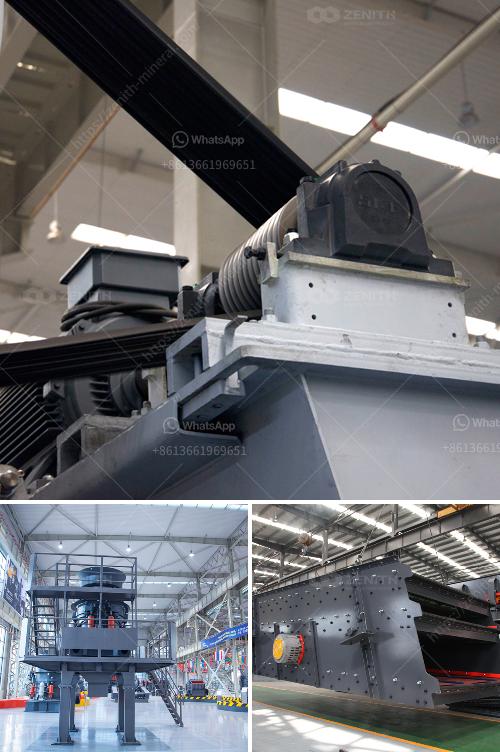A stone crushing quarry operates through a series of stages to extract and process rocks and minerals into different sizes of aggregates for various construction applications. Here's a basic overview of how it works:
Exploration and Site Development: Before any extraction, geological surveys and feasibility studies are conducted to determine the quality and quantity of the stone deposit. Once a suitable site is selected, the area is prepared by clearing any vegetation and building access roads.
Drilling and Blasting: Large rocks are often embedded in the ground and need to be loosened. This is typically done using controlled drilling and blasting. Holes are drilled into the rock face, loaded with explosives, and detonated to break the rock into smaller, more manageable pieces.
Extraction: The broken rock is then loaded onto large trucks or conveyors using heavy machinery such as excavators and loaders. It is transported from the blast site to the crushing facility.
Primary Crushing: The initial stage of crushing involves feeding the extracted rock into a primary crusher (such as a jaw crusher). This machine breaks down large rocks into smaller pieces, reducing them to a size that can be processed by secondary crushers.
Secondary Crushing: The output from the primary crusher is then fed into secondary crushers such as cone crushers or impact crushers. These machines further reduce the size of the stone and may produce aggregates of various sizes.
Screening: Once crushed, the material is sent through vibrating screens that sort the aggregates by size. Different screens are used to produce specific aggregate sizes for different applications.
Washing: If necessary, the aggregates are washed to remove any unwanted fine particles. This is usually done for high-quality or specialized applications where cleanliness is important.
Storage and Dispatch: The final aggregates are stockpiled in different sizes. From here, they are loaded onto trucks for delivery to construction sites or other end-users.
Environmental Compliance and Rehabilitation: Throughout the operation, environmental regulations need to be adhered to. Dust suppression, noise control, and water management are critical. Once the quarry operation is complete, the site is rehabilitated according to environmental plans, which may include land contouring, replanting vegetation, and other restoration activities.
Each stage of the process is designed to ensure efficiency and safety, while also minimizing environmental impact.
